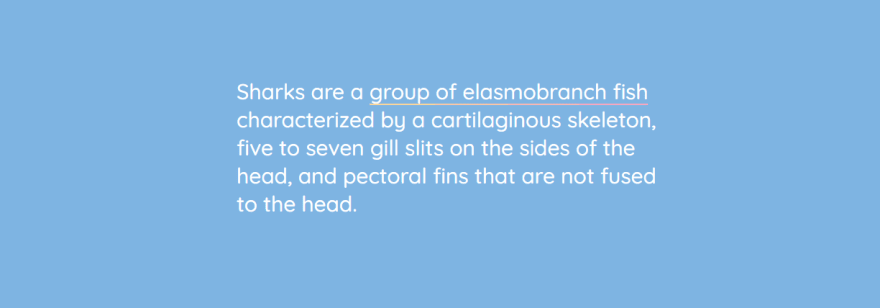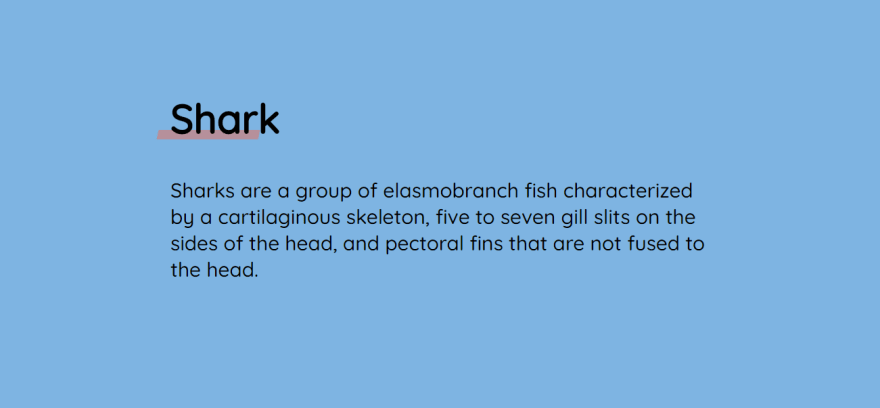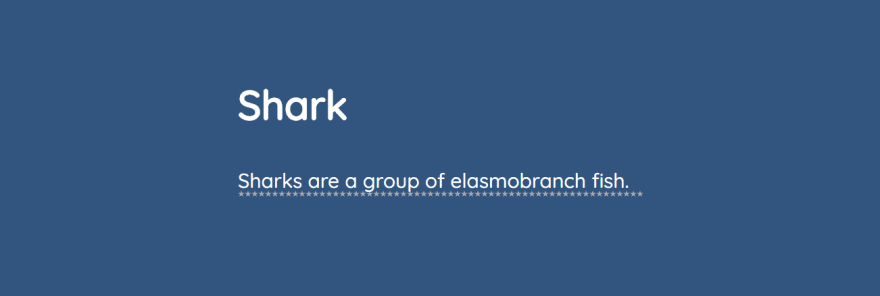An Interest In:
Web News this Week
- April 18, 2024
- April 17, 2024
- April 16, 2024
- April 15, 2024
- April 14, 2024
- April 13, 2024
- April 12, 2024
CSS Underline: 10 Examples
To design links or create animations of menu buttons, you might need to use underlines. From this article, youll learn about several methods of creating a CSS underline: using text-decoration, border-bottom, background-image, box-shadow properties, or even SVG.
CSS Text-Decoration Property
The text-decoration property is the most straightforward way to underline text. The main issue with text-decoration, however, is its lack of customizability. Well see more customized examples further in this article.
For now, lets see how we can use text-decoration for a simple CSS underline.
The text-decoration property is a shorthand property for 3 other properties:
text-decoration-line (required): overline, underline, underline overline, line-throughtext-decoration-style: solid, dotted, dashed, wavy, doubletext-decoration-color: for example, #ccc, blue, currentColor, or inherit
Here are several examples:
To remove the underline, simply use text-decoration: none.
If you want to add CSS underline on hover only, use these CSS rules:
a { text-decoration: none; }a:hover { text-decoration: underline; }An alternative to text-decoration is the border-bottom property. With border-bottom, you can also add a padding. In the example below, the first link is created with the text-decoration property, and the second one with border-bottom:
a:nth-of-type(1) { color: #32557f; text-decoration: underline #32557f dashed;}a:nth-of-type(2) { color: #32557f; text-decoration: none; border-bottom: 2px dashed #32557f; padding-bottom: 3px;}Now lets focus on fancier styling of the CSS underline.
Gradient Underline
You can create a gradient underline with background: linear-gradient and some other background properties. Heres an example:
<p>Sharks are a <a href="#">group of elasmobranch fish</a> characterized by a cartilaginous skeleton, five to seven gill slits on the sides of the head, and pectoral fins that are not fused to the head.</p> a::after { content: ""; display: block; width: 32px; padding-top: 3px; border-bottom: 2px solid #f9dd94;} Read more tips on CSS gradients in CSS Gradients: 8 Examples of Usage.
Short Underline
CSS underline can be of any width or height even shorter than the word or the link. For example, if you need to create a short underline to mark the beginning of a sentence or a title, use the ::after pseudo-element with the border-bottom property:
<p>Sharks are a <a href="#">group of elasmobranch fish</a> characterized by a cartilaginous skeleton, five to seven gill slits on the sides of the head, and pectoral fins that are not fused to the head.</p>a::after { content: ""; display: block; width: 32px; padding-top: 3px; border-bottom: 2px solid #f9dd94;}You can also set CSS underline thickness (for example, 2 px) by applying border-bottom: 2px solid #f9dd94;.
Marker-Style Underline
You can create a short skewed underline with the transform property:
h1 { padding: 30px 0 8px; position: relative;}h1::before { content: ""; position: absolute; left: 7%; bottom: 16px; width: 150px; height: 14px; transform: skew(-12deg) translateX(-50%); background: rgba(238,111,87,0.5); z-index: -1;}Moreover, you can create a marker-style underline for a long piece of text. Heres an example inspired by Codepen.io/Ash:
body { padding: 4rem;}.box { padding: 2rem; max-width: 14rem; background-color: #f2f2f2; border-radius: 4px; max-width: 50rem;}Underline-specific styles:
:root { /* The intrinsic width of the underline stroke (in pixels). This is * the same as the height of the cap images. Don't specify the * units! This is because of some of the calculations we do later on. */ --underline-intrinsic-width: 8; /* The actual width of the underline stroke we want to render (in pixels). * You can modify this, and the sizing and positioning should be calculated * accordingly. Again, Don't specify the units! */ --underline-width: 12; /* The color used to draw the underline. It should match the color * used in the cap images... unfortunately we can't modify the SVG * fill via CSS because it's a background image. */ --underline-color: #f1a1e3; /* We need to know the width of the cap images so that we * can position everything on the x axis accordingly. */ --underline-cap-width: 4px; /* The border is positioned relative to the bottom of the line. * We can move it upwards a little to create an overlap effect. */ --underline-offset-y: -2px; /* The padding to add to the x axis. By default, the caps would be * aligned with the beginning and end of the line. */ --underline-padding-x: 0.12em;}.text { display: inline; --underline-width-scale: calc(var(--underline-width) / var(--underline-intrinsic-width)); padding: 0 calc(var(--underline-padding-x) + calc(var(--underline-cap-width) * var(--underline-width-scale))); box-decoration-break: clone; background-repeat: no-repeat; color: #32557f; background-image: linear-gradient(180deg, var(--underline-color), var(--underline-color)), var(--cap-image-left), var(--cap-image-right); background-position-x: calc(var(--underline-cap-width) * var(--underline-width-scale)), 0, 100%; background-position-y: calc(100% - var(--underline-offset-y) * -1); background-size: calc(100% - calc(var(--underline-cap-width) * var(--underline-width-scale) * 2)) calc(var(--underline-width) * 1px), auto calc(var(--underline-width) * 1px), auto calc(var(--underline-width) * 1px); font-size: 3rem; font-weight: bold; --underline-width: 20; --underline-offset-y: -2px; /* The cap images to use that form the left and right shape.*/ --cap-image-left: url(https://files-6lc03kjqt.now.sh/left-2.svg); --cap-image-right: url(https://files-e7gkh52mq.now.sh/right-2.svg);}Using Images as CSS Underline
You can also use actual images (e. g. SVG or PNG) to style CSS underlines. Here are a couple of examples inspired by John D. Jamesons CodePen.
Star-shaped CSS underline:
body { line-height: 1.6;}p { background-image: url("https://s3-us-west-2.amazonaws.com/s.cdpn.io/78779/star.svg"); background-position: 0 1.3em; background-size: 10px 9px; background-repeat: repeat-x;}You can find more underline examples on sharkcoder.com
Original Link: https://dev.to/sharkcoder/css-underline-10-examples-3k7m
Dev To
 An online community for sharing and discovering great ideas, having debates, and making friends
An online community for sharing and discovering great ideas, having debates, and making friendsMore About this Source Visit Dev To








